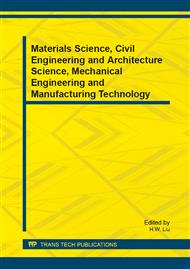p.1400
p.1405
p.1409
p.1413
p.1419
p.1426
p.1430
p.1434
p.1439
An Method to Urban Road Travel Time Estimation through ITS Data Fusion Based on D-S Evidential Theory
Abstract:
Focused on the current situations of the multiple traffic data collection efforts for urban roads, the link travel time estimation methods are respectively proposed based on two traffic data resources as station traffic data collected by microwave detectors and the vehicle plate data collected by the video vehicle plate identification system. Based on this, the link travel time estimation approach by fusing two data resources is presented using the Dempster-Shafer evidence reasoning theory, in which the probability distribution function is firstly used to construct the evidence function for each data resource, and then the weights for the two different data resources are estimated for link travel time fusion estimation through the combination rule of Dempster-Shafer evidence reasoning theory. Using the true link travel time collected by the test vehicles, the performance of the proposed method for link travel time estimation is evaluated. Evaluation results show that the proposed method can significantly improve the link travel time estimation accuracy when compared to the methods that merely uses single data resource.
Info:
Periodical:
Pages:
1419-1425
Citation:
Online since:
January 2014
Authors:
Price:
Сopyright:
© 2014 Trans Tech Publications Ltd. All Rights Reserved
Share:
Citation:


